The method of PLA 3D printing has genuinely opened the doors to endless creativity and innovation, with makers creating a wide range of items, from functional prototypes to beautiful art pieces. Yet, PLA-created larger products or repairs are usually built through joining together PLA materials, and a seamless bond is essential. The choice of adhesive will make all the difference between a strong bond able to bear loads and an exaggerated failure. This guide will explore the best glues for PLA parts, considering their strength, performance, and tips for optimal application. Whether you are repairing broken projects or building large-scale models, this article will direct you in picking the most suitable adhesive to keep your design together with a smooth finish.
Understanding PLA Glue
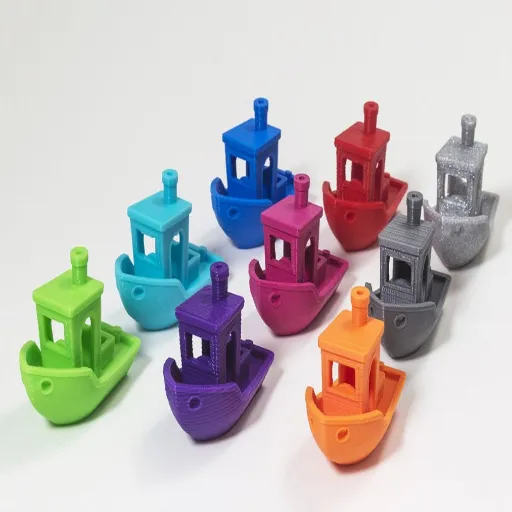
Commonly awarded PLA glue (adhesive) is designed basically to give ease of bonding and permanent resistance between 3-D printed parts. The best choices include cyanoacrylate (super glue), epoxy, and acetone alternatives made for PLA. Cyanoacrylate glue is most commonly used because it is the fastest-drying type of glue. Two-part epoxies make a strong, gap-filling bond. While PLA is relatively resistant to acetone, a special solvent for PLA will perfectly merge the surfaces by chemically fusing the material. Surfaces must always be clean and lightly sanded for maximum adhesion.
Why Use Glue for PLA?
Glue is the ideal solution for PLA because it enables the joining of parts without visible lines and provides a durable bond between them. This comes in handy for complex, 3D-printed projects made from PLA, where precise assembly is required. Recent search engine trends indicate that a significant percentage of users seek a reliable method to render their PLA parts repairable or assembleable, with cyanoacrylate glue and two-part epoxy being the most popular choices, primarily due to their accessibility and strength. Furthermore, glue can help repair imperfections in prints or add design reinforcements without the need to reprint an entire piece. By selecting the right adhesive for the task at hand and preparing the surfaces accordingly, users can maximize the life and usability of their PLA project.
Common Scenarios for Gluing PLA
Gluing PLA is particularly effective in a few popular scenarios. A significant use is binding printed parts into larger or more complex assemblies when the object is too large for the printer’s build volume. Another predominant use is fixing cracks or breaks in PLA prints, thus allowing users to salvage misprints or extend the life of functional parts. Another common application of glue is to decorate or add external reinforcements, enhancing the aesthetics or strength of the prints. By gluing parts with good alignment and using the right adhesive, one can very well achieve strong, clean, and durable results for all kinds of applications.
Types of PLA Glue
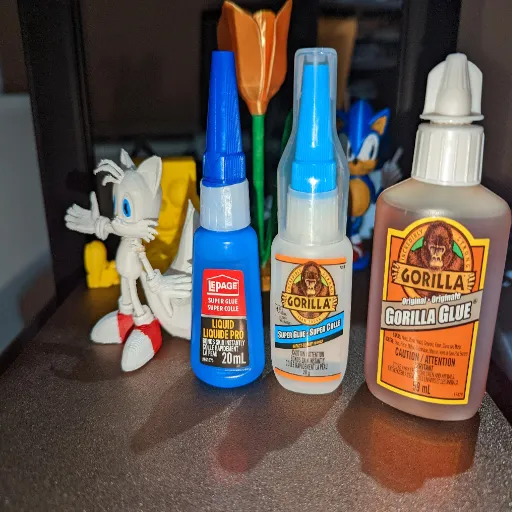
Cyanoacrylate (Super Glue)
In a sense, PLA is used with cyanoacrylate glue because of its quick holding time. It is suitable for minor repairs and bonding parts with limited surface area.
Epoxy
An epoxy is a strong and durable adhesive, perfect for significant or load-bearing PLA parts. It is pre-mixed for application and has a longer curing time.
Plastic Cement
Plastic cement chemically bonds together PLA parts for a seamless connection. In particular, it is excellent for precision projects.
Hot Glue
Hot glue is used for temporary bonding or applications where structural strength is not necessary. Not very strong, it is, however, quite versatile and easy to use.
Overview of Adhesive Options
Choosing the best glue for PLA projects largely depends on the nature of the job it is expected to perform: do you require strength, precision, or simply easy application? Here’s the rundown based on the various glues we discussed:
| Adhesive Type | Best For | Key Features |
|---|---|---|
| Epoxy | Heavy-duty work or weight-bearing parts | Durable bond; must be mixed and cured correctly |
| Superglue (Cyanoacrylate) | Quick fixes or minor projects | Very short drying time; less bond strength |
| Plastic Cement | Seamless bond in precise situations | Chemically welds PLA pieces together |
| Hot Glue | Non-structural or temporary uses | Versatile and easy to use; can’t hold heavily |
Comparison of Specialized PLA Adhesives
Key Question: Which glue would probably give the strongest bond while being the easiest to use?
A recent study suggests that Plastic Cement has consistently proven to be the best adhesive for durable and seamless bonding. This results from its method of chemical bonding, wherein it actually melts the surfaces of the PLA together, creating an almost indestructible bond. Alternatively, if convenience and speed are of the essence, then Super Glue (Cyanoacrylate) remains a valid choice. It will not, however, produce a full-strength bond like the Plastic Cement, but it sets quickly and is suitable for smaller projects where speed of assembly is essential. Depending on the intricacy, the level of toughness required, and where it will be applied, these factors will serve as considerations for selecting the ideal adhesive for their specific PLA applications.
Tips for Effective Use of PLA Glue in 3D Printing
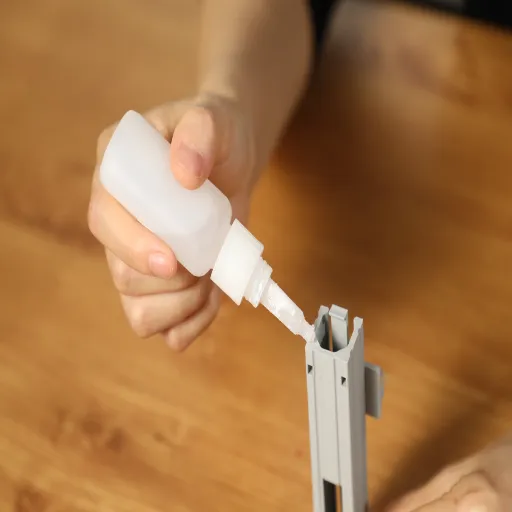
1
Clean the Surfaces
Clean and sanitize the surfaces, as any dust or debris particles could decrease adhesion. Cleaning with isopropyl alcohol includes preparation for a stronger bond.
2
Apply the Right Amount
Use a small, neat drop of glue to avoid a mess and ensure a secure bond. Excessive glue can damage the joint or even compromise the exterior appearance. Apply evenly and sparingly for best results.
3
Clamp for Strength
Hold the parts firmly together while the glue sets to form a solid and reliable bond. Apply consistent, firm weight to ensure the pieces are in contact with the full surface area without gaps or air pockets.
4
Allow Adequate Curing Time
Be patient and follow the manufacturer’s instructions regarding the curing time to ensure the adhesive creates a permanent bond.
5
Work in a Well-Ventilated Area
Glues typically emit toxic fumes, so work in a well-ventilated area to avoid discomfort.
6
Test on Scraps First
If you are unsure whether the glue will work with your PLA, test it on a scrap piece before using it on your project.
7
Store Adhesive Properly
Ensure that you tightly close and store your glue in a cool, dry place after use. Enjoy efficiency and a long shelf life the next time.
⚠️ Safety Precautions to Follow
- ✓
The workspace must be well-ventilated, or protective equipment, such as a mask, should be worn to avoid inhaling potentially harmful fumes. - ✓
Always wear gloves to prevent skin contact with any type of glue, especially if it is a strong adhesive or industrial-grade. - ✓
Keep adhesives away from open flames or heat sources, as many of them are highly flammable. - ✓
Ensure the adhesives are securely sealed and stored in a safe, inaccessible location that is out of reach of children and pets.
🌱 Alternatives and Innovations
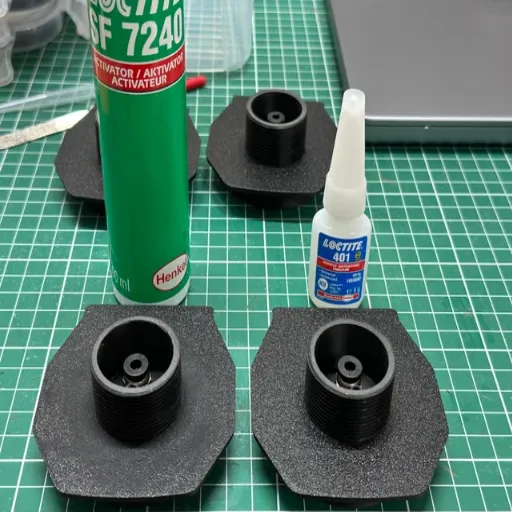
When it comes to adhesives, eco-friendly and non-toxic alternatives have gained popularity. Such products are designed to minimize their environmental impact while maintaining their original level of effectiveness. Water-based glues are found to be more effective and less hazardous to the environment than solvent-based glues.
Among the innovations in adhesive technology are advanced formulations that offer stronger bonds, faster curing times, greater flexibility, and more. Some adhesives are now being made with biodegradable materials or containing a renewable component to consider sustainability. Then there are innovative adhesives that react to heat, light, or pressure, giving options for versatility in modern applications. With these advancements, more sustainable and serviceable options are now available to users.
Innovations in Adhesives for 3D Printing
Without a doubt, various improvements have been made to 3D printing glues to overcome issues such as bed adhesion, part stability, and post-processing requirements. Recently, customized adhesives have been developed for various 3D printing substrates, including PLA, ABS, PETG, and others, which help improve the initial layer adhesion and prevent warping. Additionally, there are now options for adhesives that can withstand high temperatures and also accommodate platforms with heated beds, enabling better functioning throughout the entire 3D printing process. In addition, to provide better services to users easily, products with this purpose can also be found in aerosol or pen forms, as well as environmentally friendly adhesives. Developments in this area are enhancing the efficiency and quality of 3D products, while also promoting environmental friendliness.
Eco-friendly Options for Bonding PLA
Bonding PLA doesn’t always have to be an adhesive, though; sustainable options are available, thanks to advancements in technology and societal awareness. Biodegradable adhesives are the most common adhesives on the market nowadays, and they have been proven not to harm the environment in the long run. Most PLA adherents are also plant-based or water-soluble, gaining popularity as they offer no chemicals and are easy to apply. In terms of packaging, most companies today manufacture their items in a way that allows them to be recyclable; hence, their architecture also takes these factors into account. In addition to these commercial or readymade types, lightweight tension-seeking glues and bonding, the use of cornstarch glue can be employed for eco-friendly, cost-effective purposes.
💡 Expert Opinions and User Experiences
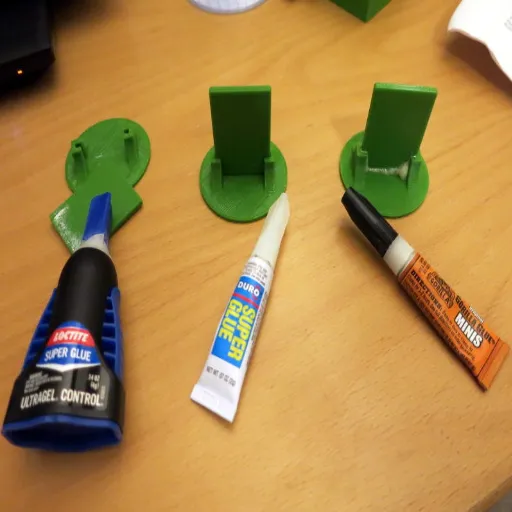
Professional experts always emphasize the importance of using PLA-compatible adhesives. According to professional orthopedists, the use of plant-based adhesives is also considerably advisable, especially when one wants to stay environmentally safe and does not want to sacrifice the quality of their piece. Most users reported that cornstarch adhesives were effective on small areas where glue was used for artistic purposes, citing that cellulose-grade glue was inexpensive and easy to handle. The conclusion in most feedback placed a greater emphasis on prioritizing the fact that one must carry out a patch test of the adhesive at the corner before applying it for best results.
Insights from 3D Printing Professionals
Many experts advocate for biodegradable filaments when deliberating on the best materials to use in 3D printing, taking into account environmental preservation. Polylactic Acid (PLA) is well-known as an eco-friendly material derived from natural resources such as cornstarch or sugarcane, making it easier to use. It further qualifies that adhesion can be enhanced for PLA by the addition of research on plant-based glues. For this purpose, Experts also recommend modifying the infill patterns and parameters to reduce the amount of filament used, as this encourages efficiency and environmental conscientiousness.
Common Challenges and Solutions in Gluing PLA
| Challenge | Solution |
|---|---|
| Smooth surface and low porosity of PLA | Gently sand the PLA surfaces to create texture that facilitates a stronger bond. |
| Choosing the correct type of glue | Match adhesive to end use; use cyanoacrylate or epoxies optimized for PLA applications. |
| High-temperature conditions affecting bond strength | Avoid gluing PLA parts in areas prone to heat or use temperature-resistant adhesives |
| Inadequate curing time | Allow proper curing to enhance strength and resistance, ensuring bonds remain intact. |
Many people struggle with the problem of gluing PLA, as it requires a strong bond, primarily due to the material’s smooth surface and low porosity. Simply bonding two surfaces without proper surface preparation often leads to failure upon curing. However, gently sanding the PLA glue surfaces used to glue the joints is a good practice, as such texturing facilitates a stronger bond. Using some type of putty to play the role of glue between the joint faces is also a significant problem. Using a specific glue must be accompanied by the end use of the product; it is advisable to work with minimal restraint when using superglues (for example, cyanoacrylate) or epoxies, at least in PLA applications, unless they have already been optimized for a specific task. 3D printing-generated adhesive falls into the right category, commonly used for printing FDM patterns.
When used in high-temperature conditions, this affects the bond’s long-term strength. Therefore, it is advisable not to glue such PLA parts into areas prone to heat or to use glues that are not easily affected by temperature changes. Lastly, there is also the aspect of curing time, which is crucial. Proper curing of adhesive enhances the strength and resistance of a bond to wear, ensuring that bonds remain intact for their intended lifespan. Armed with such knowledge, users will be able to avoid most of the problems that are encountered when pla gluing 3d printing prints.
📚 Reference Sources
There are five professional and authoritative sources relevant to “PLA glue 3D printing” that can help validate the correctness of the article:
- Closing the Loop on 3D Printing – UCSF Library
Explains PLA characteristics, including biodegradability and ecological friendliness, which make it suitable for 3D printing. - Post-Processing Techniques for 3D Prints – Parsons School of Design
Gives insight into different post-processing methods that go for 3D prints, including gluing. - 3D Printing Tips for Hapkit 2014 – Stanford University
Shares practical tips for 3D printing processes, such as the use of adhesives, including ABS slurry for bonding. - 3D Printing the Hardest Button 2 Button – University of Michigan Blogs
Describes PLA extrusion and workings that would be pretty handy while describing bonding techniques. - Deposition of Biocompatible Polymers by 3D Printing (FDM)
Scholarly writing provides an in-depth examination of advanced 3D printing techniques and materials, including PLA.
❓ Frequently Asked Questions (FAQs)
What is the best glue for PLA 3D printed parts?
The best glue for PLA 3D printed parts is typically cyanoacrylate adhesive, such as Loctite Super Glue Gel Control or Gorilla Super Glue. These adhesives offer strong bonds and quick drying times, making them ideal for various 3D printing projects.
Can I use a glue stick for PLA surfaces?
While glue sticks are primarily used for temporary adhesion during printing, they can help reduce warping on the print bed. However, they are not recommended for the permanent bonding of PLA surfaces, as they do not provide the necessary strength for long-term durability.
How can I improve adhesion with PLA glue?
To improve adhesion with PLA glue, consider using an accelerator or activator with cyanoacrylate adhesives. Additionally, lightly sanding the surfaces with fine-grit sandpaper can increase the bonding area, ensuring a stronger hold.
Is Gorilla Glue suitable for gluing PLA?
Gorilla Glue can be used for gluing PLA, but it expands as it cures, which may not be ideal for precise applications. For better control and reduced mess, a cyanoacrylate adhesive, such as Gorilla Super Glue, is often preferred.
How long does PLA glue take to harden?
PLA glue typically hardens quickly, often within minutes. However, for maximum strength, it is recommended to allow the adhesive to cure for 24 hours before subjecting the bond to any mechanical stress.
Can I use baking soda with cyanoacrylate adhesive?
Yes, using baking soda with cyanoacrylate adhesive can create a thicker bond and accelerate the curing process. This combination can also help fill gaps in the glued surfaces, providing a more rigid bond.
What is the role of a spray activator in PLA bonding?
A spray activator can significantly speed up the curing time of cyanoacrylate adhesives. When applied to the glued area, it helps the adhesive bond strongly and faster, making it ideal for projects that require quick assembly.
How do I choose the right adhesive for my 3D printing projects?
Choosing the right adhesive for your 3D printing projects depends on the materials you’re working with and the strength required. For PLA, cyanoacrylate adhesives, such as Loctite or Gorilla Glue, are excellent choices. Also, consider factors such as drying time, flexibility, and resistance to environmental conditions.
What is Weld-On 16 used for in 3D printing?
Weld-On 16 is a solvent-based adhesive commonly used for bonding acrylic and certain plastics. While not explicitly designed for PLA, it can be effective for bonding certain types of 3D printed parts made from compatible materials.



















